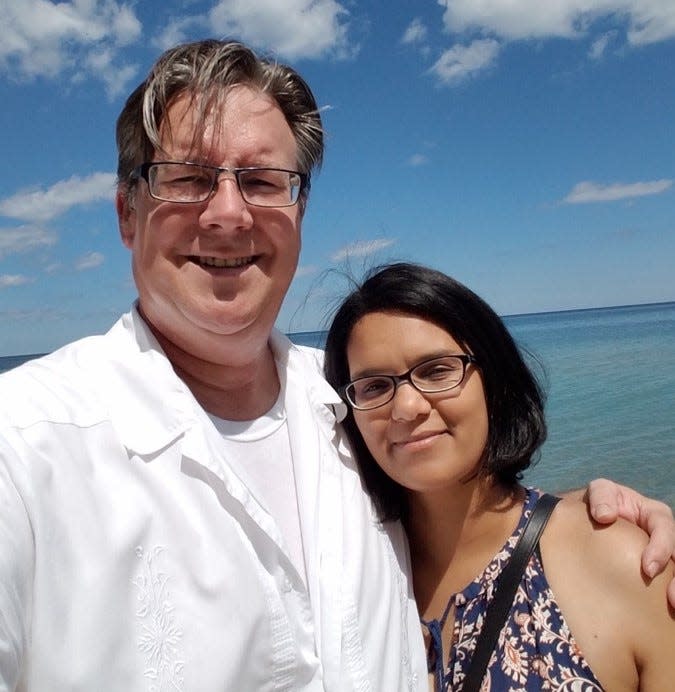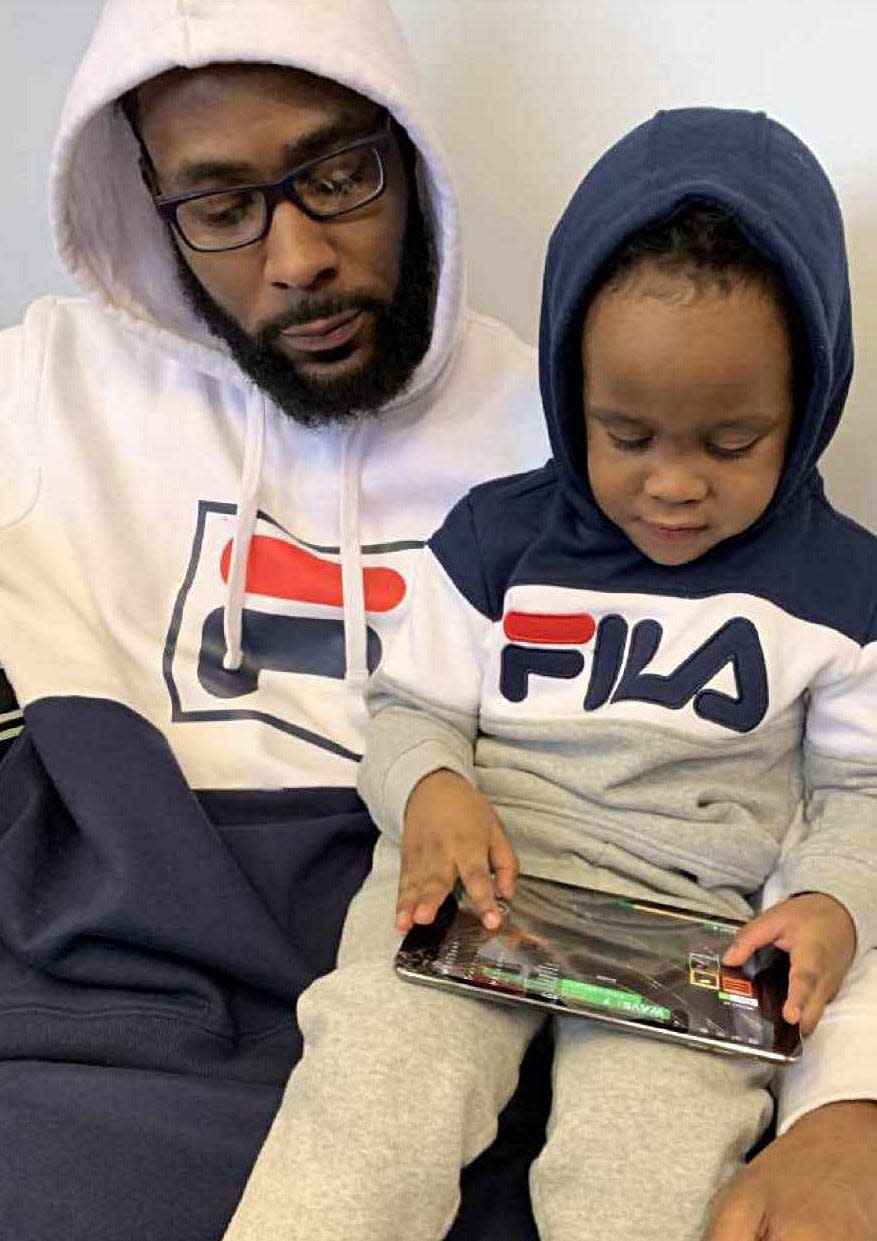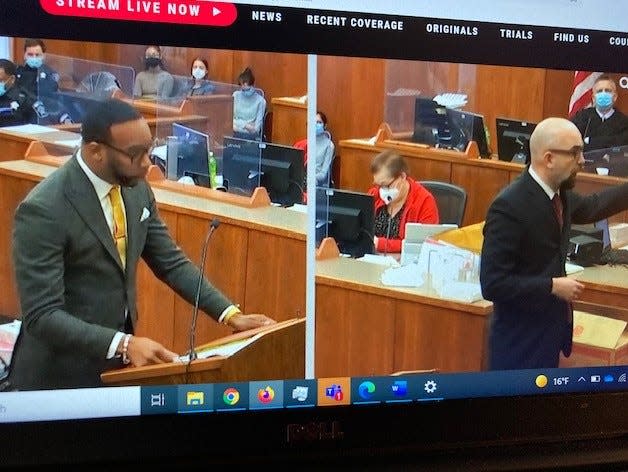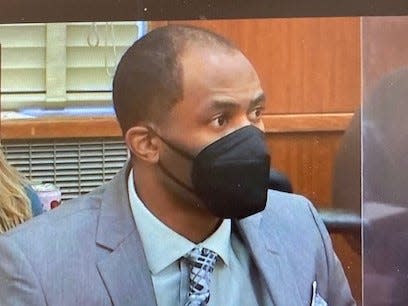Self-defense claim, defendant's disappearance will be at the heart of Theodore Edgecomb's homicide trial


Trial began Wednesday in the case of a bicyclist who says he acted in self-defense when he killed a man after a road rage incident on Brady Street in Milwauke.
Theodore Edgecomb, 32, is charged with first-degree intentional homicide in the Sept. 22, 2020 shooting of Jason Cleereman, 54, an immigration attorney and advocate. Edgecomb left town after the incident, and was arrested about six months later in Kentucky.
Interest in the case jumped this fall after Edgecomb's lawyers first raised self-defense after a Kenosha jury acquitted Kyle Rittenhouse of fatally shooting two people during protests there in Aug. 2020. Supporters and activists have demonstrated in Milwaukee on Edgecomb's behalf in recent weeks.
The prosecution made much of Edgecomb's disappearance as evidence he was conscious of his guilt, not confident that he acted lawfully.
"He went from the scene to his house to we-don't-know-where," Assistant District Attorney Grant Huebner said during opening statements.


Huebner noted video will show Edgecomb provoked Cleereman when he punched him in the face. The defense claims Edgecomb had retreated from that encounter and that Cleerman was the clear aggressor immediately prior to the shooting.
In the defense opening statement, Texas-based attorney B'Ivory LaMarr said his client -- who will testify -- left town because he was scared, and spent the months looking for lawyers and a way to pay them.
LaMarr told jurors that on the night of the homicide, Edgecomb had ridden to a Thai restaurant and ordered dinner for himself and his daughter, then rode off to get dessert while waiting for the dinner order.
Cleereman and his wife, Evangelina, had left a bar and were driving east on Brady Street when they pulled into the oncoming lane to get around a car waiting for a parking space. They swerved back and nearly into Edgecomb, who went flying into another car, LaMarr said.
More: Self-defense cleared Kyle Rittenhouse; will it work for a Black man who shot a white lawyer?
LaMarr said his client has been nearly hit on his bike before, but what got him angry was Cleereman yelling at him with a racial slur. He later caught up to the Cleeremans, stopped at the light at Brady and Holton Street, and asked Cleereman, in the passenger seat, if he had been talking to him.
Cleereman said yes, LaMarr said, and used the slur again, and Edgecomb slugged him through the open window.
"He shouldn't have taken matters into his own hands," LaMar said. "He should have handled that differently. But after the punch, he gets back on his bicycle. He's done with it."
Edgecomb turned right up onto the Holton Street bridge. The Cleeremans turned from the wrong lane to follow him. LaMarr said evidence will show it was more of a chase, that Evangelina Cleereman accelerated violently toward Edgecomb.
Cleereman got out of the vehicle and approached Edgecomb, who fired a single shot at Cleereman from close range. He fell near the stairs from the bridge down to Water Street.
LaMarr told jurors that after her husband was shot, Evangelina Cleereman didn't come to try to help him. Nor did she call 911. LaMarr told jurors the wife instead called another woman who has a relationship with a police officer.
He mentioned an eyewitness who called 911 and will testify she saw Evangelina Cleereman in the car, talking on the phone, then running to her husband's body, checking his pockets and returning to the car.
And while police pole cameras captured video of the punch and the shooting, LaMarr tried to raise questions about why police don't have any video of when Edgecomb says he was struck by the Cleereman's KIA Soul farther east on Brady Street.
Late Wednesday, jurors saw videos of both the punch and the shooting, and the folding knife found in Cleereman's pocket.
The case is being carried mostly live on CourtTV.
The defense had challenged the makeup of the initial jury pool on Tuesday, when only three or four of the 50 people brought in were people of color. Judge David Borowski later scrapped that panel for a different reason, after learning more than a dozen of the potential jurors had been seen on a court video stream. Borowski had ordered no one show the jurors.
A more diverse group of 50 was called in and the final jury of 14 includes seven people of color, a dozen women, and two men. plus two alternates is made up of 12 women and two men, half of whom are people of color.
Also Tuesday, Edgecomb pleaded guilty to two counts of bail jumping that were charged with the homicide, to prevent prosecutors from going into detail about those cases and possibly prejudicing his self defense claim.
Testimony is scheduled to continue Thursday.
Contact Bruce Vielmetti at (414) 224-2187 or bvielmetti@jrn.com. Follow him on Twitter at @ProofHearsay.
This article originally appeared on Milwaukee Journal Sentinel: Milwaukee prosecutors open homicide case against Theodore Edgecomb

